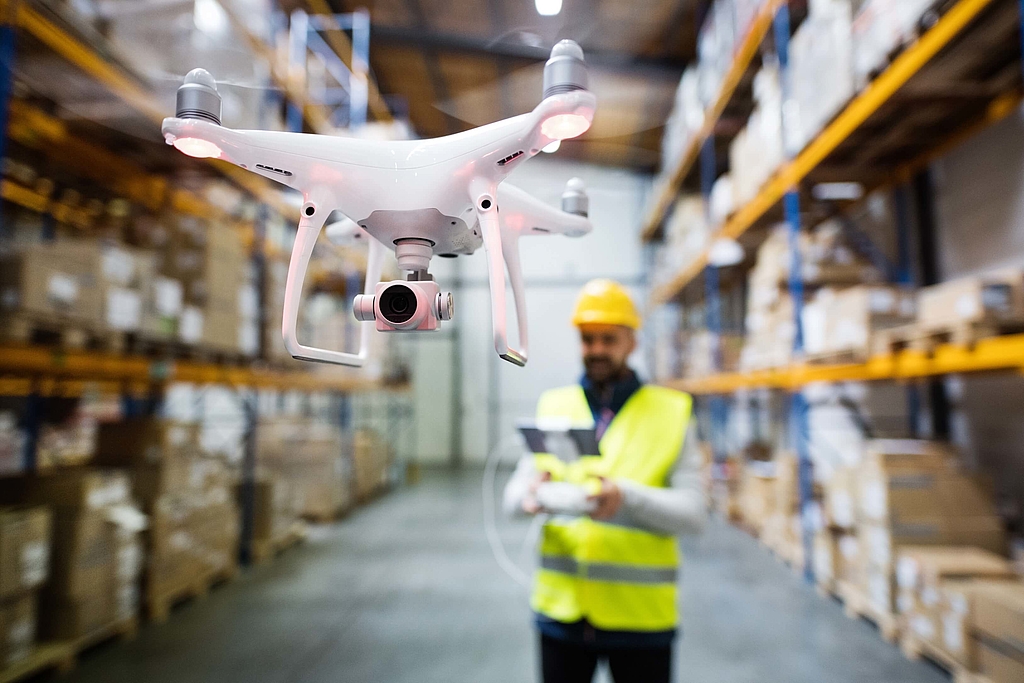Unmanned aerial vehicles, more widely known as drones, are on the rise. Thus, it’s expected to generate $82 billion in economic growth by 2025 along with 100,000 jobs. In addition to the aerial photography, military purpose or daily pleasures, the commercial use of drones are getting into a serious level thanks to fact that the Federal Aviation Administration (FAA) has already issued hundreds of waivers to businesses. While it’s easy to see how drones will impact a number of industries, they will have the greatest impact on supply chain and logistics.
Amazon’s fire
The drones can handle the transportation of an inventory or goods in a logistics warehouse to the customer by air. So, despite being a cliché the sky is the only limit for drones. Amazon realized this opportunity in 2013 and started investing in drone delivery business. Not many people believed in Jeff Bezos when he unveiled Amazon’s drone delivery vision at that time. However, Bezos made a smart decision and he didn’t exclude or eliminate the third-party contracts, and he kept the existing delivery options by adding the drone delivery feature. Even though Amazon wants to create his very ecosystem with the least reliance on external companies, he never pushed drones too soon too much. Because investors know very well that sometimes being too forward or leading too further can burn you. Nonetheless, Amazon kindled drones in an almost perfect way. Calling this service Prime Air, Amazon is now picking the fruits. According to Business Insider, Amazon’s Prime Air delivery drones could be expected to ship out packages directly to the customer from the warehouse in 30 minutes or less for as low as $1.0. Since Amazon’s success in the air, many other companies have begun testing or using drones in the distribution of products to the end customer.
Next generation of automation
We’re closer to a world with drone delivery than we are to a world with self-driving cars according to industry experts. In fact, these experts predicted that if not for FAA’s strict regulations, we would be witnessing flying drones delivering from pizza to smart phone very frequently. Once these regulations find some common ground, the warehouses will extend their automation outside of their warehouses. Soon after negotiations between the retailers and government are set, the new tools such as delivering products to customers by drone, will rise the bar of the automation.
The Pros of Drones in Logistics
The CEO of Makhina, Mehmet Ali Çalışkan is a true believer in drones. “There are many advantages of using drones in logistics. To begin with, they are much faster than the traditional ways. As our daily life changes due to the COVID-19, we rely more on speed. Not only do we want speed on delivery time, but if we are not happy with the order, we now have the chance to refund quickly. This is a win-win situation because once the customer feels his needs are taken care of, he will continue shopping.” says Çalışkan. He also believes that drones may access to some remote areas or difficult geographies especially in rural areas.
Cleaner and faster
Of course no need to mention that drones can operate 24 hours 365 days a year and thus requires no shifts. Last but not least, they are cleaner because they reduce traffic and CO2 emissions. “This is actually more important than it sounds because the regulations about emission levels can change dramatically in order to fight against global warming. So, drones are future-proof, since the cargo trucks might require extensive modifications for future usage.”
Still not affordable
“However, there are also many barriers for drones to be a stellar performer in logistics,” Çalışkan points out. “It’s definitely a high cost technology. You need some serious know-how and you should constantly do research and development. Besides, the carrying capacity will always be limited.” Therefore many CIOs hesitate to invest in drones due to the fact that they cannot work with large volumes. There is also another risk which involves the most popular drone type: Indoor. Almost all drones derive from indoor drones and unfortunately they are not fully ready for outdoor. They need to be upgraded with better stabilization systems that can increase their stability flying outside. Only after improving these aspects, indoor drones will be a step closer to reach a fully autonomous and functional status.
The future
Despite some serious challenges, drones have the potential to change the warehousing dramatically. Electric drones are the real game-changer as they are ready for future. Amazon, which seems to be the most successful operator of drones, plans to make all Amazon shipments net zero carbon. They believe the drones will lead (or fly) the company giant to this goal at least 50% by 2030. Within 5 years, drones are expected to play a vital role in logistics operations all over the world. But the question is whether it’s efficient for a company to invest in drones due to carrying capacity or not. It’s without a doubt that some e-commerce giants whose purchase history is mostly based on small package services will increase their income while other logistics professionals won’t be giving up on their truck fleets overnight. Yet, more and more drones will be flying above the trucks.




